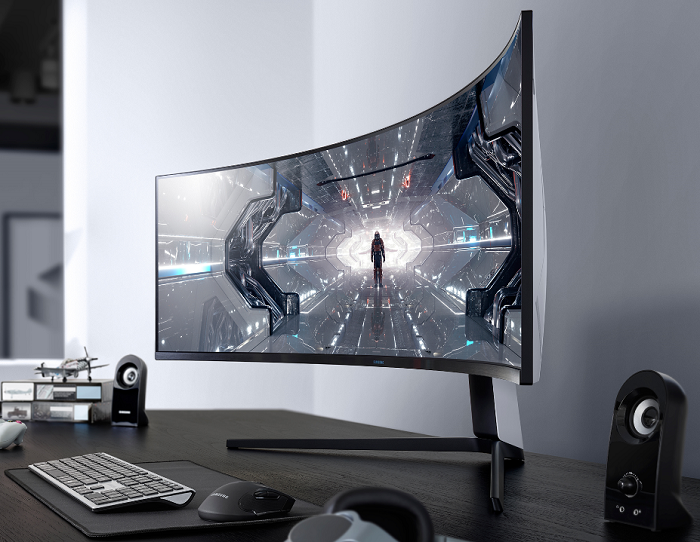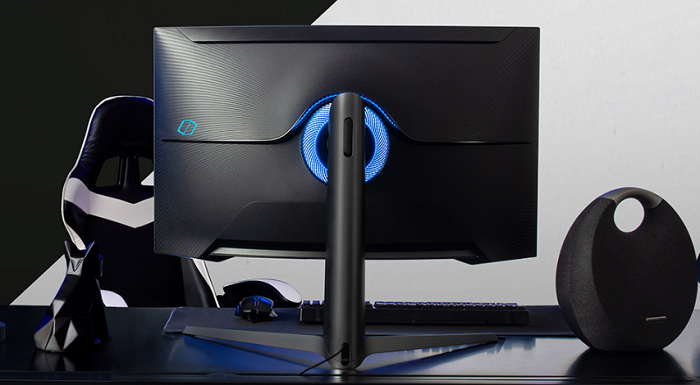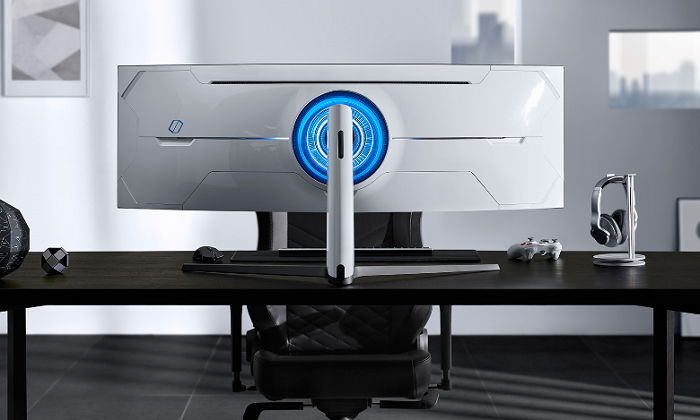Samsung is an ongoing participant in the gaming fringe showcase, having made its introduction with the 24-inch cfg70 144hz gaming screen just in 2016. In spite of the fact that Samsung and presentations are a characteristic fit and their gaming screen lineup did truly well with Samsung expanding their contributions as the years progressed. Come 2020 they will go firearms blasting and discharge two new lineups at CES.

The G7 Line-Up (32” and 27”)
Directly off the bat both of these screens are 240Hz at 1440p (QHD), which clearly is crazy. There are likewise 1440p 240Hz screens from different producers, to be specific Lenevo and Hp, yet both of their screens depend on TN boards.

These screens are anyway founded on an HDR600 VA board so you show signs of improvement hues though with a little hit on reaction times. Discussing reaction times, these screens will both be G-Sync and FreeSync 2 good.
The G7 has been completely redesigned with a sleek, matte black exterior and color-changing rear core lighting that can remain static or dim during gameplay, as well as change colors based on gamers’ preferences. In addition, the G7 has added dynamic shapes and lighting to the monitor`s front bezel.
Similarly, as with most Samsung gaming screens, these are additionally bent, yet at an extremely forceful 1000R arch. Samsung, for the most part, offers a 1800R arch in its standard gaming screens, however, they are decreasing it with sequential models. This will, for the most part, boil down to individual taste as there are upsides and downsides to both these methodologies.
The G9 Line-Up (49”)
This will be the World’s first QHD screen with a 240Hz invigorate rate. I didn’t hope to see the words QHD and 240Hz in a solitary section for quite a while, let alone in 2020, yet here it is. In spite of the fact that this makes me stress over transfer speed impediments as Display port 1.4 maximizes at 4K 144Hz utilizing DSC. The G9 is most likely utilizing the Display port 2.0 standard or Samsung has some custom arrangement set up.

Truly! both G-Sync and Freesync 2 are bolstered.
With a 32:9 perspective proportion, it impersonates Samsung’s CHG90 in structure factor, in spite of the fact that the G9 is by all accounts unfathomably prevalent, at any rate on paper. The G9 has more pixels contrasted with the CHG90, it likewise maximizes at 240Hz contrasted with the CHG90’s 144Hz. The G9 additionally has an increasingly forceful 1000R bend and not at all like the littler screens, this will be observable because of its size.
This screen likewise has an unconventional goal of 5120 × 1440, which is a type of 5K however you can all the more likely portray it as two 1440p screens stuck together. Once more, you get the opportunity to see a QLED VA board here however with HDR1000 support (Meaning a Peak Brightness of 1000 nits).
Cost and Availability
The G7 lineup is truly tempting, the other not many screens at 1440p 240Hz run TN boards, yet in the event that somebody needs to go for a comparative design they wouldn’t have bargained on shading exactness now. 1440p isn’t a simple goal to drive and not many games will even cross the 144hz imprint (aside from a couple of E-Sports titles). On the off chance that you are somebody who needs a screen for media utilization and a blend of esports and AAA titles, at that point this screen can be a superb pick given its flexibility. Be that as it may, I wouldn’t remark on the offer given Samsung is yet to value these screens.
Going to the G9 lineup, it’s not normal for anything we have seen previously. 5K at 240Hz is unbelievable and you would need to drop goals in many games to try and hit those edges. Samsung’s CHG90 consistently stays a decent choice at $1000 USD however for somebody hoping to purchase the best in class in tech, the G9 is the place it is at.
There’s no discharge date yet however on the off chance that you happen to be at CES, you can look at them at the Central Hall (Booth #15006).
Thank you
Thank’s a lot man. God bless you